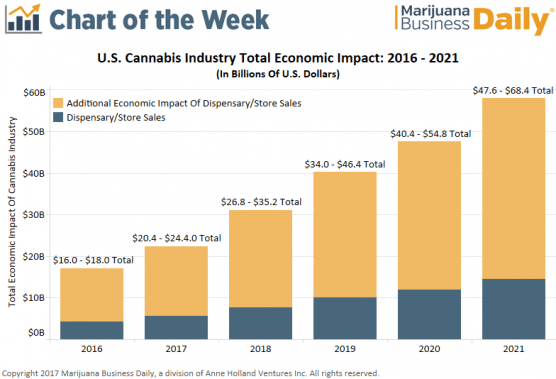The first draft is out. And many are thankful it’s not the last.
That’s the consensus of some industry leaders after Los Angeles’ marijuana businesses got their first glimpse of much-anticipated city regulations for the cannabis sector. Inroads have been made, but there’s much fine-tuning left to do.
“It’s still a work in progress. We knew that they were going to roll out with something, and that it was going to be something we needed to shape and form,” said Virgil Grant, the president of the Southern California Coalition, one of many cannabis industry groups that’s been working hand-in-hand with City Council to draft the rules.
The next step is a 60-day comment period for the public and members of the industry to weigh in with suggestions and critiques. The city has a self-imposed deadline of Sept. 30 to finalize regulations, well in advance of the state government’s goal of opening the cannabis business application process in January.
Steps forward
The draft regulations are already viewed by many in the California market as a quasi-victory, because it reinforces that city leaders want to create a functional cannabis industry instead of taking the hard-line crackdown approach favored by the city attorney’s office in recent years.
There are also watershed provisions in the draft rules, including proposed regulations for cannabis delivery businesses and a “social equity” portion to award more MJ business permits to minorities. Both of those could further new trends in major U.S. metro marijuana markets if they end up in the final regulations (Oakland has also moved on a similar social equity program for MJ businesses, but delivery has stalled in most cities with cannabis markets).
And while the 51-page draft includes many specifics – such as bans on outdoor growing, extraction using volatile solvents and foreign corporations obtaining city MJ business licenses – the proposed regulations arguably leave marijuana businesses with more logistical questions than answers.
“Right now, it’s a step in the right direction, but as an ordinance, it has a lot of work that needs to be done to it,” said Avis Bulbulyan, CEO of L.A.-based cannabis consultancy Siva Enterprises.
Problems at hand
The most obvious issue is the draft regulations don’t explicitly lay out any path toward formal business licensing, said Ariel Clark, an industry attorney and chair of the L.A. Cannabis Task Force. Instead, she said, the draft rules only identify a “certificate of compliance” that businesses can obtain.
“This is massively problematic,” Clark said. “It’s like being regulated on quicksand … A permit is a rubber stamp. A certificate of compliance is less than that.”
Clark suspects an “old-guard, anti-cannabis” faction at City Hall is behind some of the wording in the draft regulations. She’s concerned it could leave L.A.’s cannabis industry open to further problems with law enforcement, instead of the full legal legitimacy that city voters supported in March with Proposition M.
She also pointed out that a second L.A. draft – rules for a land-use ordinance from the City Planning Department – refers to “limited immunity” for MJ businesses. It’s the same language used in Proposition D – the measure Prop M directed the city to repeal. And that, she said, is more “backward-looking” than what the city must do to bring the full cannabis industry into the mainstream.
“If the overarching goal is to create a well-regulated industry … this ordinance in its current form does not accomplish that,” Clark said.
Grant added that one of the SCC’s primary objectives is to ensure a direct path to full business licensing is clearly spelled out in the final set of regulations.
Regulatory chaos?
Industry observers wonder what will happen to hundreds of existing medical marijuana dispensaries when the application period begins.
Under the draft regulations, only a handful of L.A.’s existing MMJ storefronts will be legally allowed to keep selling cannabis uninterrupted – probably as few as 135, the maximum number that were allowed under Proposition D.
But Bulbulyan estimated there are 800-900 operating dispensaries today, and the city recently estimated the number could be as high as 1,700.
The hundreds of storefronts that don’t fit into the Prop D compliant category would either have to close down until they receive a compliance certificate – which could be months or much longer – or face a potential $20,000-a-day fine for operating illegally, as originally called for in Prop M.
If the final regulations include that provision against existing MMJ businesses, Bulbulyan said, city officials could be in for a rough ride because plenty of dispensary owners have become used to operating in the black or gray markets. So they would likely ignore possible fines and, if shut down at one location, would just reopen in another.
That would put the city in a situation of trying to enforce the law against many already in the cannabis business, while simultaneously working to issue compliance certificates as well as hearing appeals cases for companies whose applications get rejected. In addition, it could bolster the life span of the black market in L.A., instead of persuading hundreds of companies to join the regulated market immediately.
In short, it could create regulatory chaos, Bulbulyan said, adding, “The city is going to end up with way too many irons in the fire.”
Grant said the city must crack down on the illicit businesses in the existing industry and suggested that initially only about 200 storefronts should be given priority in licensing, including the pre-Interim Control Ordinance (aka pre-ICO) dispensaries that have been in operation since at least 2007.
“How do you not even mention those that pioneered this industry?” he asked, referring to the pre-ICOs.
‘Social equity’ unclear
The social equity provision also is lacking in details.
The city’s draft regulations intend to prioritize a program “based on a social equity analysis aimed at promoting equitable ownership and employment opportunities in the cannabis industry.” But it doesn’t spell out who would qualify or how.
Grant said he’s pushing for a “one-to-one” system where “you give out one regular license, you give out one social equity license.”
An African-American who co-founded the California Minority Alliance, Grant said he envisions many of those social equity licenses going to blacks and Hispanics, the communities hit hardest by the war on drugs.
City Council President Herb Wesson, meanwhile, said in a statement he foresees a “social equity program intended to serve individuals and communities that were disproportionately harmed by cannabis prohibition.”
And for every social equity question that surfaces, additional issues sprout from the draft regulations, such as how growers, edibles makers and other plant-touching companies can prove they’ve been in operation since 2015 – another condition for compliance certificate prioritization.
So even though the city has devoted time and effort to regulating the marijuana industry, plenty of uncertainty remains for L.A. cannabis executives.
The upside, Bulbulyan and Grant agreed, is that now there’s a working document that stakeholders can work on improving.
“Let the negotiations begin,” Bulbulyan quipped.
John Schroyer can be reached at johns@mjbizdaily.com




